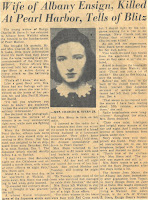And yet just months after this video was published the Student Assembly sent a campus-wide email denouncing a spate of racial incidents and the institution's quasi-apathetic response. The expression of racism varied: it was found in vicious emails, in slurs on dorm room doors, or in “the impersonation of current students.” The result remained the same: the Student Assembly held that “these hate crimes wound our sense of community.” Perhaps what makes Dartmouth what it is can be found in these occurrences too.
 There is an eerie resemblance between this email and the Redding Report published 44 years earlier. Formally titled “Institutional Racism and Student Life at Dartmouth College,” the document enumerates a long list of racial abuses suffered by the black population at the hands of the school. According to the authors, “various minority students have reported being told by a professor, before he had seen any of their work, that he knew they would not do well in his course because they were non-white.” They wrote of one episode in which a group of black students asked to use the Cohen-Bissell lounge to fraternize but were pointed in the direction of the Afro-American Society basement instead. They observed the coaches (only one of whom was black) poorly treating black athletes (of which there were several). They worried about the lack of nonwhite faces on committees--even on the one claiming students would be judged by a jury of their peers. They felt the alienation black students endure as a result of estrangement from the “Dartmouth family.”
There is an eerie resemblance between this email and the Redding Report published 44 years earlier. Formally titled “Institutional Racism and Student Life at Dartmouth College,” the document enumerates a long list of racial abuses suffered by the black population at the hands of the school. According to the authors, “various minority students have reported being told by a professor, before he had seen any of their work, that he knew they would not do well in his course because they were non-white.” They wrote of one episode in which a group of black students asked to use the Cohen-Bissell lounge to fraternize but were pointed in the direction of the Afro-American Society basement instead. They observed the coaches (only one of whom was black) poorly treating black athletes (of which there were several). They worried about the lack of nonwhite faces on committees--even on the one claiming students would be judged by a jury of their peers. They felt the alienation black students endure as a result of estrangement from the “Dartmouth family.”Just as the 2019 email contended that racism “detract[s] from our individual and collective security,” denying a sense of emotional well-being to students, the 1974 report argues that the psychological problems afflicting some of Dartmouth’s black community was partially caused by a “traumatic cultural shock.”
Another disturbing parallel connecting the decades-wide gap between the institute of the 70s and the one of today is the College’s response. The students of the former remarked that “whenever Dartmouth College has been able to escape the issue (of racial inequality), it has tried to do so,” and when the school has acted its attempts were “incremental in nature or founded in insincerity.” In a similar vein, the Student Assembly writes “an insufficient reaction has been made by the administration...to further prevent intolerant individuals from acting against the well-being and unity of the Dartmouth community.”
Pessimism lingers in the conclusion of the Redding Report, with the authors anticipating that the
college won’t act on its own volition. Their cause for concern was later justified, as it took six months for the College to respond, and even then one author felt “that the Administration had not dealt directly with many of the allegations contained in the report, merely shifting responsibility for responding to these allegations to various committees.”
The writers charge the school with contradicting itself, repeatedly failing to guard its more vulnerable offspring all the while advertising itself as welcoming everyone into its family. In a prophetic voice whose sterness carries through more than forty years, one author offers both a way to resolve this paradox and an ultimatum: “The college can continue to take insufficient action against discrimination on the campus, but will have to be honest with the minority applicants and matriculating students.” It remains to be seen if any asterisks or daggers will appear, small but certainly present, when the school attempts to rally unity with phrases like “What Makes Dartmouth DARTMOUTH.”
To read the Redding Report, come to Rauner and ask for D.C. History LD1441 .C384.
Posted for Alexis Reaves ’20, recipient of a Historical Accountability Student Research Internship for the 2019-2020 academic year. The Historical Accountability Student Research Program provides funding for Dartmouth students to conduct research with primary sources on a topic related to issues of inclusivity and diversity in the college's past. For more information, visit the program's website.


